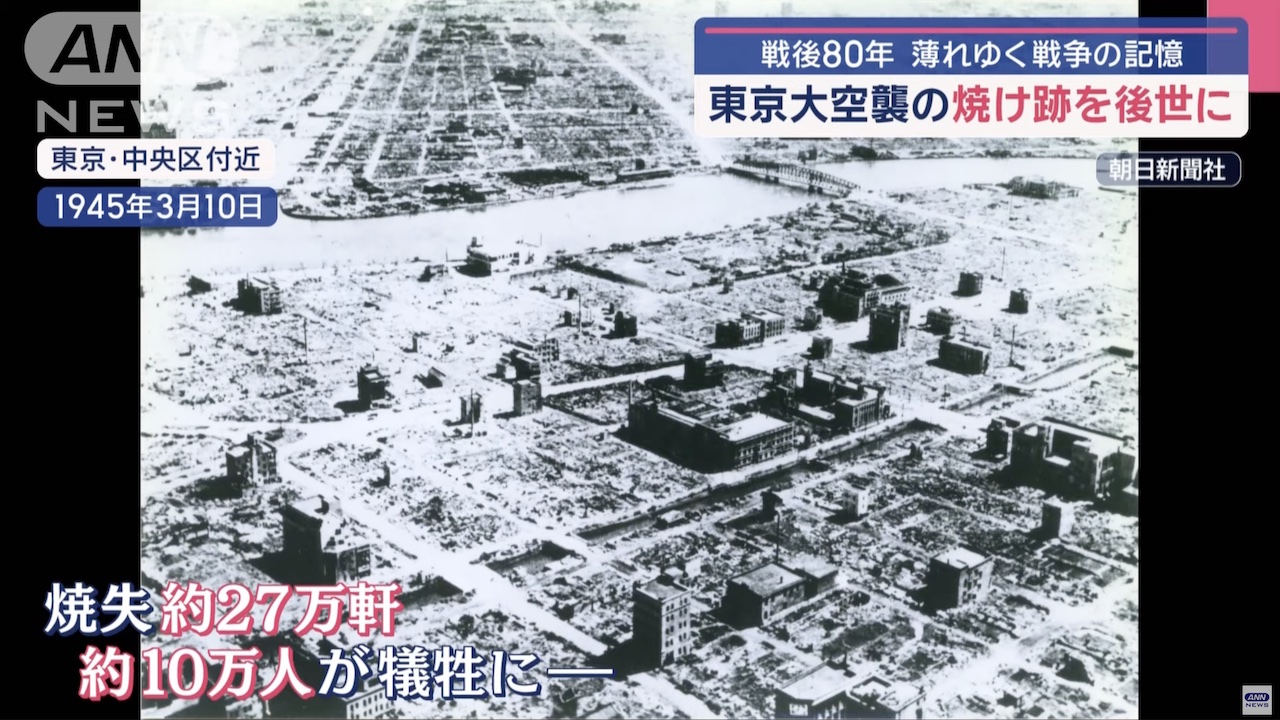TOKYO, Jan 12 (News On Japan) - This year marks 80 years since the end of the Pacific War. As the number of people who experienced the war dwindles, efforts have begun to preserve the remnants of the Tokyo air raids, which claimed the lives of 100,000 people.
A small room surrounded by blackened walls and ceiling—this room, 80 years ago, was covered in dark soot from the flames that claimed the lives of approximately 100,000 people.
Sanyukai’s Mitsuhiro Toya: "It’s unclear what this room was used for, but it has remained in its original condition ever since."
Located in Tokyo’s Sumida Ward, the former main building of Sanyukai Hospital bears the terrible scars of the Tokyo air raids. In the early hours of March 10, 1945, countless incendiary bombs dropped by American B-29 bombers turned the downtown area, including the hospital, into a sea of fire.
Masako Hoshino, who was 15 years old at the time and is now 94, recalled: "Someone from the neighborhood patrol came to the air raid shelter and said, ‘Today’s air raid is different in scale; it’s dangerous to stay here, so please flee.’ I saw sparks flying, and as I lowered my head, people along the roadside poured water on us."
Hoshino fled to a park about 300 meters from the hospital, where she narrowly escaped with her life. However, by dawn, the sight of her devastated neighborhood unfolded before her eyes.
"I saw Ueno Station’s building, which wasn’t visible before the air raid, standing in the midst of the burnt-out landscape. I was astonished and that memory has stayed with me ever since," she said.
On that day, approximately 270,000 buildings were destroyed in the Tokyo air raids, and about 100,000 lives were lost.
Though engulfed by flames, the concrete structure of Sanyukai Hospital miraculously remained intact, and there were no casualties among the doctors and patients.
The hospital resumed operations the following year, but a small rooftop room was left untouched. For 80 years, it has quietly preserved the memory of the horrific war.
Preserving the Aftermath of the Tokyo Air Raids for Future Generations
However, with the aging of the building, a decision was made last year to demolish the old main structure. Before the demolition began, experts conducted a survey and discovered that this room was a valuable historical artifact.
Kenta Senji, curator at the Center of the Tokyo Air Raids and War Damage: "We were genuinely surprised to find something like this still existing. As far as we know, there are no other rooms preserved in this condition. We decided to preserve as much as possible before the building is torn down."
Pieces of charred wooden fragments and parts of the walls were cut out from the room and will be preserved and displayed at another facility.
Senji added: "I believe this will help people understand the intensity and tragedy of the fire."
As opportunities to hear firsthand accounts from war survivors become increasingly rare, the effort to preserve these remnants takes on greater significance.
Sanyukai’s Mitsuhiro Toya: "We want people to know that such a massive air raid occurred, one so fierce that it left objects near the rooftop completely blackened by flames. It is a historical fact that must be passed on to future generations."
Source: ANN
















